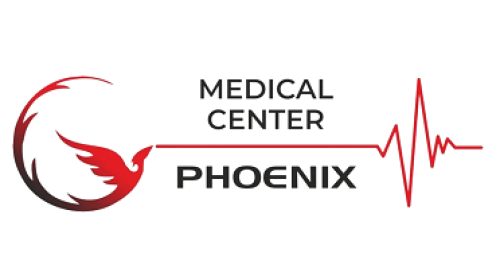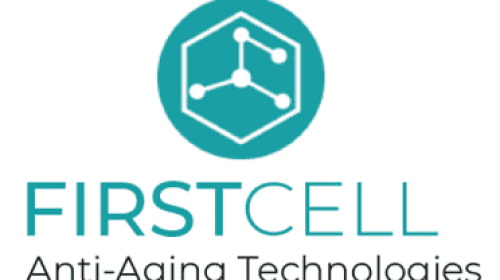From Setback to Comeback Stem Cells Inspire Stroke Survivors’ Journey
A stroke, also known as a cerebrovascular accident (CVA), is a medical condition that occurs when the blood supply to a part of the brain is disrupted, leading to the death of brain cells. This interruption of blood flow can happen either due to a blockage in the blood vessels supplying the brain (ischemic stroke) or bleeding from a ruptured blood vessel in the brain (hemorrhagic stroke). Strokes are a medical emergency and require immediate medical attention. There are two main types of stroke
- Ischemic Stroke: This type of stroke is caused by a blockage or clot in a blood vessel, reducing blood flow to the brain. It is the most common type, accounting for about 85% of all strokes.
- Hemorrhagic Stroke: This type of stroke occurs when a blood vessel ruptures, causing bleeding in or around the brain. It accounts for approximately 15% of all strokes.
Symptoms: The symptoms of a stroke may include sudden numbness or weakness in the face, arm, or leg (especially on one side of the body), confusion, trouble speaking or understanding speech, severe headache, dizziness, loss of balance or coordination, and trouble with vision.

How Stem Cells Empower Stroke Survivors’ Journey?
Stem cells offer hope and empowerment to stroke survivors on their journey of recovery. These unique cells possess regenerative properties that can make a significant difference in the lives of those affected by stroke. By transplanting stem cells into the damaged area of the brain, they can promote the regeneration of brain tissue and the formation of new neural connections, a process known as neuroplasticity.
Additionally, stem cells have anti-inflammatory effects, reducing inflammation in the brain and creating a favorable environment for healing. Through the secretion of growth factors, stem cells support the development of new blood vessels and enhance the survival and integration of transplanted cells.
Procedure of Stem Cell Therapy for Stroke
Patient Evaluation
The first step is a comprehensive evaluation of the stroke survivor’s medical history, physical condition, and suitability for stem cell therapy. This evaluation may include neurological assessments, imaging studies, and other diagnostic tests to determine the extent of the stroke’s impact and identify the most appropriate treatment approach.
Stem Cell Source Selection
The next step involves selecting the source of stem cells for transplantation. Different types of stem cells can be used, including mesenchymal stem cells (MSCs) derived from bone marrow or adipose tissue, neural stem cells, or induced pluripotent stem cells (iPSCs).
Stem Cell Collection
Once the stem cell source is determined, the stem cells need to be collected. This can be done through a minimally invasive procedure. For example, if using autologous stem cells, bone marrow or adipose tissue can be harvested under local anesthesia.
Stem Cell Processing
After collection, the stem cells undergo processing and expansion in a laboratory setting. This step involves isolating and purifying the stem cells, increasing their numbers through cell culture techniques, and ensuring their quality and viability for transplantation.
Stem Cell Transplantation
Once the stem cells are prepared, they are ready for transplantation. The delivery method may vary depending on the targeted area of the brain. Common techniques include direct injection into the affected region or intravenous infusion, allowing the stem cells to circulate throughout the body and reach the damaged brain tissue.
Rehabilitation
Following stem cell transplantation, close monitoring of the patient’s condition is essential. Regular follow-up visits, neurological assessments, and imaging studies are performed to track progress and evaluate the therapeutic effects. A comprehensive rehabilitation program may includes physical and occupational therapy.
Best Stroke Treatment Clinics in the World
America, Mexico, Tijuana
America, Mexico, San Pedro Garza Garcia
Asia, Kuala Lumpur, Malaysia
America, Colombia, Pereira
America, Juarez, Mexico
Stem Cell Therapy for Strokes Success Stories
Remember, the path to regaining control over your life starts with taking action. Don’t let strokes hold you back any longer. Explore the potential of stem cell treatment for strokes today with PlacidWay, and embark on a transformative journey toward recovery and renewed hope! Contact Us now to take the first step towards your stroke recovery. Your future awaits!
Frequently Asked Questions
What are the potential benefits of stem cell treatment for stroke?
Potential benefits of stem cell treatment for stroke may include:
- Improved motor function and mobility
- Enhanced cognitive function and speech
- Reduction in post-stroke disabilities and complications
- Regeneration of damaged brain tissue
- Neuroprotective effects, minimizing further damage
- Improved quality of life and functional independence
How are strokes diagnosed?
Strokes are typically diagnosed through a combination of physical exams, medical history review, and imaging tests. These may include a neurological examination, blood tests, computed tomography (CT) scan, magnetic resonance imaging (MRI), and cerebral angiography.
Can stem cell treatment be used for all stroke patients?
Stem cell treatment for stroke is still an evolving field, and its use is typically limited to specific patient populations in clinical trials or under special circumstances. Eligibility criteria may vary, but generally, patients who have experienced an ischemic stroke (caused by a blood clot) and have a stable medical condition are considered potential candidates for stem cell therapy. Each patient’s case needs to be assessed by medical professionals to determine the suitability and potential benefits of stem cell treatment.
Can someone recover completely from a stroke?
The extent of recovery from a stroke varies from person to person and depends on factors such as the severity of the stroke, the area of the brain affected, and the effectiveness of rehabilitation. While some individuals may experience significant recovery and regain independence, others may have long-term disabilities or challenges. Recovery is often a gradual process, and the focus is on maximizing functional abilities and improving quality of life through rehabilitation and ongoing support.
Can strokes be hereditary?
While strokes are not directly hereditary, some risk factors for stroke, such as high blood pressure, diabetes, and certain genetic conditions, can have a hereditary component. Having a family history of stroke or certain genetic disorders may increase an individual’s risk of experiencing a stroke. However, it is important to note that lifestyle factors and other environmental factors also play significant roles in stroke risk.
Request Free Quote








